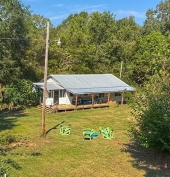








Brenda
Bloom where you are planted.
http://restfultrailsfoodforestgarden.blogspot.com/




M. Edwards wrote:
What would you do with two flat acres of sandy loam given the "client's" wishes, money being a non-issue? How would you set it up?




TheDirtSurgeon wrote:
If money is a non-issue, allow me to suggest you hire a good PC designer in your area. You'll get much better advice from someone who knows your climate, and can put boots on the ground, than you will from random people from all over the planet. Free advice is usually worth what you pay for it.




M. Edwards wrote:
I've thought about that.. main issue I have is that I don't necessarily think a three day design course and certificate qualifies someone as more competent than myself to design the layout of my property. I know people personally who've taken the courses who have little to no practical knowledge (read: don't know how to use a shovel),




































Paul Cereghino- Ecosystem Guild
Maritime Temperate Coniferous Rainforest - Mild Wet Winter, Dry Summer




 . There's good money to be made selling a seasonal progression of a wide variety of fruits and veg through the CSA model, and a lot of people are/have been successful at it (and a lot of them on less than two acres, I might add). We obviously see eye-to-eye in regards to government officials. Better to beg forgiveness (read: claim ignorance) than to ask permission.
. There's good money to be made selling a seasonal progression of a wide variety of fruits and veg through the CSA model, and a lot of people are/have been successful at it (and a lot of them on less than two acres, I might add). We obviously see eye-to-eye in regards to government officials. Better to beg forgiveness (read: claim ignorance) than to ask permission. 
































 1
1





Paul Cereghino- Ecosystem Guild
Maritime Temperate Coniferous Rainforest - Mild Wet Winter, Dry Summer


















Paul Cereghino- Ecosystem Guild
Maritime Temperate Coniferous Rainforest - Mild Wet Winter, Dry Summer









Hughbert brings up a good point -- processing. On two acres in your area (I suspect) you'd extract little income from selling raw crops. Not that you'd have a hard time selling a couple bushels of strawberries, for example, but you're limited by your acreage.




Sadly, I must agree with Mike E. From what I have seen, most PC "designers" seem to be catching the wave from the latest craze: suburbanites that want to be "green" (despite the the 300hp SUV in the driveway), and will sell them a package to turn their backyard into a "food forest". I know that there are true designers out there, but in an urban/suburban environment, you are more likely to encounter the recent 'graduate' who merely wants to finance their dream, than a true designer with actual experience in making it happen in a real world environment.
Until enough dedicated people get into the movement, we will be stuck with a lot of wannabes who are just milking the ca$h cow.




Idle dreamer









Paul Cereghino- Ecosystem Guild
Maritime Temperate Coniferous Rainforest - Mild Wet Winter, Dry Summer





Idle dreamer




Paul Cereghino wrote:
Meanwhile you need demonstration sites.
 Then we can give tours and show people our yards, still without need of a certificate.
Then we can give tours and show people our yards, still without need of a certificate.Idle dreamer









Idle dreamer




H Ludi Tyler wrote:
With enough information (photos, topographical maps, etc) folks here on the board could probably jointly design quite a complete permaculture plan or evaluate an existing plan, all without needing certification or the exchange of money.
In my opinion.




Mike E wrote:
Ironically (or perhaps logically?) it seems the financial elite are also the most likely to patronize/benefit from PC design services (the types of people who have the extra money to throw around at things like hiring out yard and landscaping services rather than mowing/mulching/weeding themselves).







